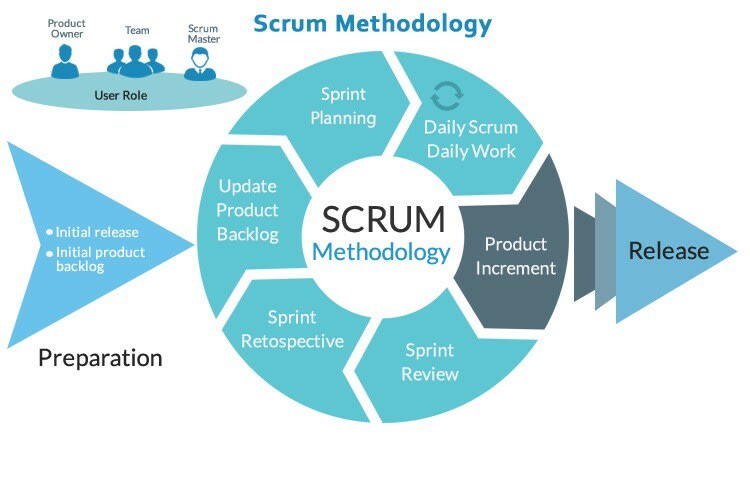Will the project reach this date? Urgent!! Agile is the method not applied in companies where the completion time of such projects is valued more than the quality.
Organizations that can be shaped according to market conditions and are open to change are Agile organizations. In traditional companies, personnel do not have time to think, they have no authority to interpret, their own initiative is minimal. Because the chain of command is very strict. And the company has a manager who knows everything. Ideas of employees that can add value to the project or company are not considered. This leads to a decrease in motivation over time and eventually the loss of personnel.
Of course, it is not right to expect innovative and high value-added projects to emerge in environments where mistakes are not welcomed, covered up, and is paid for with overtime, low promotions or low salary increases. Projects like this are always patched or stuffed with irrelevant modules or classes that don't fit, making them cluttered and underperforming. However, in agile companies, mistakes are seen as tutorials to take one step further. With the experience gained, mistakes that can make the project worse later are prevented.
Agile companies are not a company where personnel performances is measured by what is written in weekly reports. Instead, they are structures where the employee is valued, the impact of the work done is prioritized rather than the size. Agile companies are places where leaders who personally take part in projects, guide, help and motivate work, rather than managers who know everything and just say do it.
This time, I started by praising Agile culture, which is another very important topic of the Advanced Software Development article series, and criticizing the traditional method (If I made a mistake, support me with your comments. Let's correct it together.). If you've come this far by reading the series, it's fine. If you came directly to this article, I suggest you read the 0- Advanced Software Development article.
Now back to our topic, what really is Agile?
Agile is a process that allows a team to manage a project more efficiently by dividing it into several phases.
Although Agile has been partially implemented in many sectors, especially the software industry, since the 1970s, it was fully defined with the Agile Manifesto published in 2000 by a group of developers looking for a new software development method, with the effect of the Scrum methodology that emerged towards the end of the 1900s.
12 principles for Agile are identified in the Agile Manifesto:
- Customer satisfaction
- Early and continuous delivery
- Being open to change
- Frequent delivery
- Business and developer collaboration
- Motivated individuals
- Face to face meeting
- Clearly defined transactions
- Technical competence
- Simplicity
- Self-organized teams
- Editing, mirroring and adjusting
You may have heard the term Agile mostly with scrum methodology. So let's explain the term scrum. Scrum is one of many types of agile methodology known for breaking down projects into large chunks called "sprints". It is an Agile method that contains meetings, roles, and tools to help teams working on complex projects collaborate and better structure and manage workloads. Although it is known for its frequent use in the software industry, it can actually be used by any team. You can apply the scrum methodology even within the family. After all, every family counts as a small team serving a common purpose :)
Scrum is used to manage complex projects or by companies that are results-oriented, efficient, and focused on innovation. Scrum is a very good project management system for customer-oriented companies as it is more adaptable to customer preferences thanks to its flexibility.
Agile Scrum Methodology
The combination of the Agile philosophy and the scrum framework creates the “Agile Scrum” methodology. Agile scrum methodology can be used for companies of all sizes. Actually, agile and scrum are two different methods and can be used separately; however, the benefits of using them together make this compound structure the most popular of the agile methods.
While other project management methods often emphasize building an entire product in a single operation from start to finish, agile scrum methodology focuses on delivering several iterations of a product to stakeholders to deliver the highest business value in the least amount of time.
Agile scrum methodology is a project management system based on incremental development. Each iteration consists of two to four weekly sprints. The goal of each sprint is to establish its specified characteristics and produce a potentially deliverable product. Subsequent sprints are adjusted based on stakeholder and customer feedback as more features are added to the product.
What benefits does the Agile scrum methodology provide?
Agile scrum methodology has many benefits. The biggest benefit is that it is flexible and adaptable. In this sprint-based method, feedback is received from the team and stakeholders after each sprint. If there is any problem or change suggestion, the scrum team adapts it to reach its target more easily and quickly to the new sprints to be planned. This way all stakeholders of the project are happy because they are involved in every stage of project management. This increases employee and customer satisfaction as well as increases organizational synergy.
Compare this situation with situations where you had to make customer annoyance and voiced change requests after most, or worse, the entire project, where stakeholders were not involved. Either you compromise the performance and algorithm by making big changes in the project, or you start the project from the beginning and cause more costs. This situation, which is frequently encountered in traditional methods, reveals how important the agile scrum methodology is. Based on these, we can conclude that the agile scrum methodology also reduces costs.
The benefits it provides to the project in terms of creativity, innovation and quality can be counted among the other benefits of agile scrum, as ideas are taken from all stakeholders in each sprint.
There are three basic roles in Agile scrum methodology: scrum master, product owner and scrum team. Everyone is equally dedicated to the project. A team working for a single purpose. Let's talk briefly about these roles:
Scrum master: The scrum master is the facilitator of the scrum development process. It ensures that the scrum rules are implemented as intended, as well as holding daily meetings with the scrum team. The Scrum master is a leader, not a manager. Coaches and motivates the team. It seeks to remove obstacles to sprints and ensure that the team has the best possible conditions to achieve its goals.
Product owner: The Product Owner is the person who tries to maximize the value of the product. This is no easy task. It should ensure that the expectations of all stakeholders who use or will use the product are met. Accordingly, his main task is to set the expectations of the product and manage a scrum backlog, which is a detailed and constantly updated to-do list for the scrum project. He checks that each sprint has achieved its goals, and expresses his ideas to the scrum master or the scrum team at sprint meetings where necessary.
Scrum team: A Scrum team is a self-organized group of three to nine people who do the work themselves, with the business, design, analytical, and development skills to solve problems and produce deliverables. This team is responsible for achieving of each sprint.
To ensure that the scrum principles are properly applied in the Agile scrum methodology, there must be a scrum expert in the company or an outside scrum expert consultant.
For now we have come to the end of another article. I also published the 7th article of the series. Now you know how important Agile Scrum methodology is for large-scale companies or quality projects that I have mentioned in every article, or how much it will contribute to the project. I'm ending this article here, but don't stop here, keep researching. Moreover You can check the scrum.org platform for scrum master trainings and certification.
In the Advanced Software Development series:
Previous article: "5- What is Continuous Integration and Continuous Delivery? Why should it be used?".
Next article: "7- What makes SOLID principles special? Are there any other software development principles? What are they?".
Don't forget to like if you think it's useful :)
Always get better...






Top comments (0)